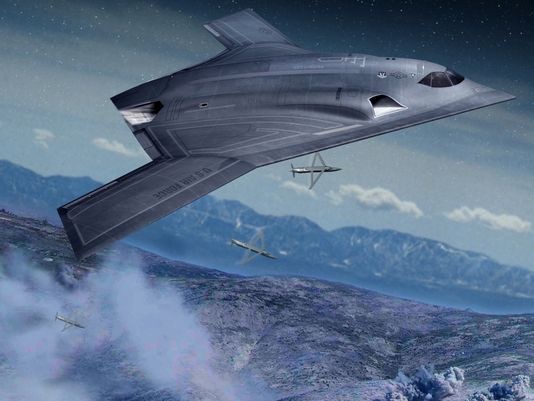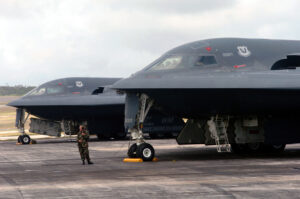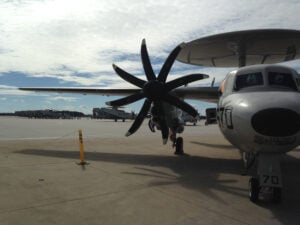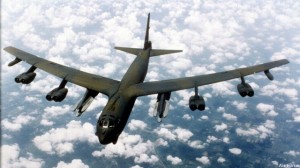Why Northrop Won The LRS Bomber
Posted on
How did Northrop beat world’s largest defense companies, the Boeing-Lockheed Martin team, in the crucial competition for the Long Range Strike Bomber (LRSB)?
First, and probably most importantly, Northrop Grumman is the only company in history to design, develop, manufacture, and maintain a long-range stealth bomber—the B-2 Spirit. Thanks to pre-award briefings, we know that the Air Force Rapid Capabilities Office managing the acquisition saw the LRS-B program as a way of advancing the application of new stealth technologies, not only in survivability but also in producability and maintainability. Northrop Grumman has advanced the state of the art in all- aspect stealth aircraft from modernizing the B-2, developing the stealthy X-47B unmanned aircraft (a candidate to help solve the U.S. Navy’s long-range strike dilemma),and working other programs.
We also knew before the recent announcement that the LRS-B program was designed to combine the very best practices in integrating advanced propulsion, imbedded antennas, self-defense systems, electronic and communication suites, and manufacturing techniques. Northrop Grumman brought to the competition not only corporate expertise in these areas, but also extensive expertise in the subsystems so critical to stealthy aircraft.
The company not only owns and maintains the B-2, but builds the radars and communications systems for the low-observable F-22 and F-35. Manufacturing and integrating systems that rely on electronic emissions compatible with stealth raises many challenges, but Northrop Grumman has decades of successful experience to leverage. Savvy observers noted that Lockheed Martin comes to Northrop Grumman for that expertise.
Northrop Grumman also has an ace up its sleeve in the manufacturing capabilities inherent in the company. Northrop Grumman not only has a factory designed to build B-2 bombers, but that factory is producing F-35 stealth fuselages today on an award-winning automated assembly line. Boeing has never produced an operational stealth aircraft. Furthermore, the Air Force has announced that the initial buy will be in five lots for a total of 21 aircraft, or about four aircraft per lot.
Northrop Grumman is uniquely qualified to drive efficiencies out of similar production rates. From the E-2D, to Global Hawk, and Triton, Northrop Grumman is very comfortable producing at that rate. Boeing is much more focused on higher rate production and very seldom, if ever, produced aircraft in that low quantity, let alone aircraft that will be as sophisticated (read stealthy) as the LRS-B.
Why is the LRS-B program so critical to U.S. national security? Experts in American defense policy point to the increasing inability of U.S. forces to deploy forward in the face of growing “anti-access/area denial” (A2/AD) capabilities of our potential adversaries, to include China, Russia, and Iran.
These and other foreign militaries are attempting to counter the traditional plans and patterns of projecting American military power into a vital region by not only prohibiting our relatively short range air and naval air forces from deploying to forward bases, but also by preventing their freedom of action and maneuver in close-in areas of military operations. Just this week, Secretary of Defense Dr. Ashton Carter has called the new bomber “the backbone of the Air Force’s future strike and deterrence capabilities.”
Evolving threats to American security guarantees in the Pacific Rim and Persian Gulf regions place a premium on platforms combining the range, payload, and survivability needed to underwrite U.S. commitments. Long-range aircraft are able to launch from bases outside the reach of adversaries. Heavy bombers can utilize their large and varied payloads to hold any potential target at risk.
State-of-the-art stealth technology enables the synergy of low-observability and tactics to ensure the survivability of the platform in contested air environments characterized by integrated air defenses. Unfortunately, the capabilities needed to execute these missions successfully are in short supply in the existing long-range bomber force. Except for the 20 B-2s, of which only 16 might be available for combat operations, the remaining 76 B-52s and 63 B-1Bs legacy bombers cannot survive in this contested air environment.
Given the critical nature of the program it is not surprising that the Air Force “followed a deliberate and disciplined process” which was “scrutinized via DoD peer reviews” as Air Force Secretary Deborah James noted in the award announcement.
Given the challenges of anti-access/area denial environments, the requirement to hold various high-value targets at risk in this contested airspace, and the shortfalls of our current long-range bomber force, it is essential that the United States demonstrate the capability to conduct sustained power projection operations to deter and defend against hostile aggression for decades to come.
America’s new bomber, reportedly well along the acquisition path in terms of major testing and risk reduction, will leverage mature technologies and systems to minimize development risk and cost growth while sustaining a U.S. advantage in a long-term military competition. Northrop Grumman has the design and manufacturing capability and capacity to deliver LRS-B at the lowest risk. Boeing may be bigger, but Northrop was better.
Robert Haffa, a retired Air Force colonel, is the former director of the Northrop Grumman Analysis Center. Northrop Grumman does business with Haffa Defense Consulting.
Subscribe to our newsletter
Promotions, new products and sales. Directly to your inbox.




